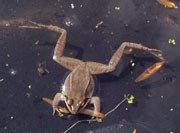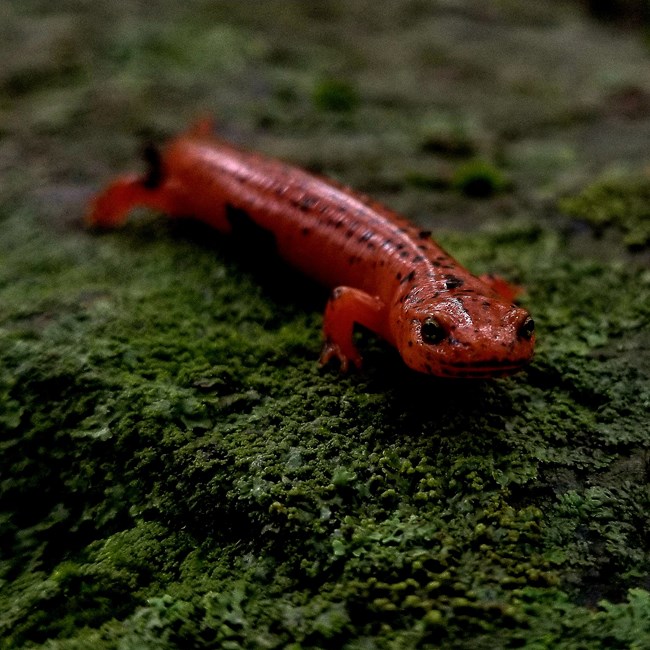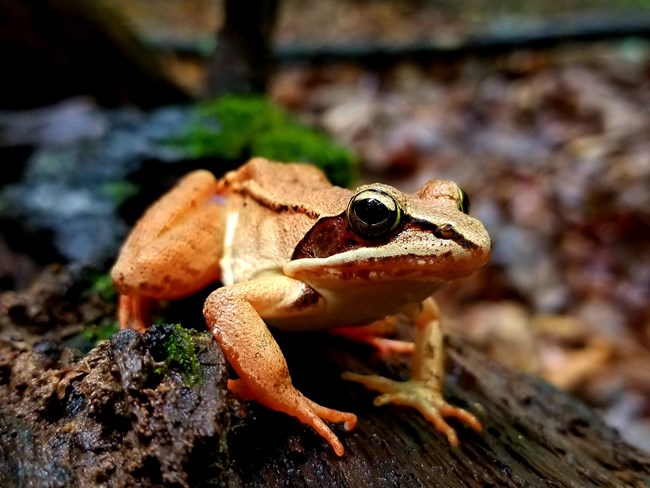
(Photo by Carolyn Davis) Please remember that it is illegal to collect or harm them for any reason! 
NPS Photo/Thomas Zygmunt SalamandersThere are three different types of salamanders at Catoctin: mole salamanders, newts, and lungless salamanders. Mole salamanders spend most of their time underground in animal burrows and natural underground openings. They have robust bodies and limbs with short, blunt heads. The spotted salamander is the only mole salamander at Catoctin. Newts are primarily aquatic, but leave the water after the larval stage to live up to three years on land. This sub-adult time on land is called the "eft" stage. Following this stage they return back to the water. The red-spotted newt is the only species of newt found at Catoctin. The lungless salamanders make up the largest family. As their name implies, these animals do not have lungs, rather they take in oxygen through their skin, a process known as "cutaneous respiration". Lungless salamanders at Catoctin include the northern dusky, eastern mud, seal, mountain dusky, northern two-lined, longtail, northern spring, four-toed, red-backed, slimy, ravine, and northern red.Frogs and ToadsFrogs and toads belong to the amphibian order Anura. This is the largest order of amphibians with over 4,000 species. They can be found on all continents except Antartica, and on most islands of the world. Primarily carnivores, frogs and toads will feed on any animal of the appropriate size. Courtship usually occurs in or near water, with the male vocalizing to attract the female. The breeding season normally begins in early spring and continues through summer. It is during this time that the calls of frogs are most noticeable. All frog and toad species have different calls, so knowing frog calls can be a valuable identification tool. The frogs and toads that can be heard, and sometimes seen, at Catoctin include the wood frog, spring peeper, pickerel frog, green frog, bull frog, northern leopard frog, gray tree frog, American toad, and the Fowler's toad.
NPS Photo In late winter through early spring, Wood Frogs (Lithobates sylvaticus) will emrge from their winter dormancy for the breeding season. Wood Frogs will spend the winter half frozen, letting ice crystals form in between the cells in their tissues and once the very first signs of Spring arrive, they will gradually begin to thaw out from their icy hibernation. Wood Frogs are some of the earliest breeders in the year. Even if there is snow still on the ground, the males will all gather in temporary pools where they will call out to the females. Their calls resemble the sounds of ducks quacking. Once the females have selected thier mates, laid their eggs (in masses up to 1000-3000) and the males have fertilized them, the eggs will develop for 9-30 days until the tadpoles emerge and then over 2 months they will metamorphose into adult frogs. |
Last updated: May 1, 2021
